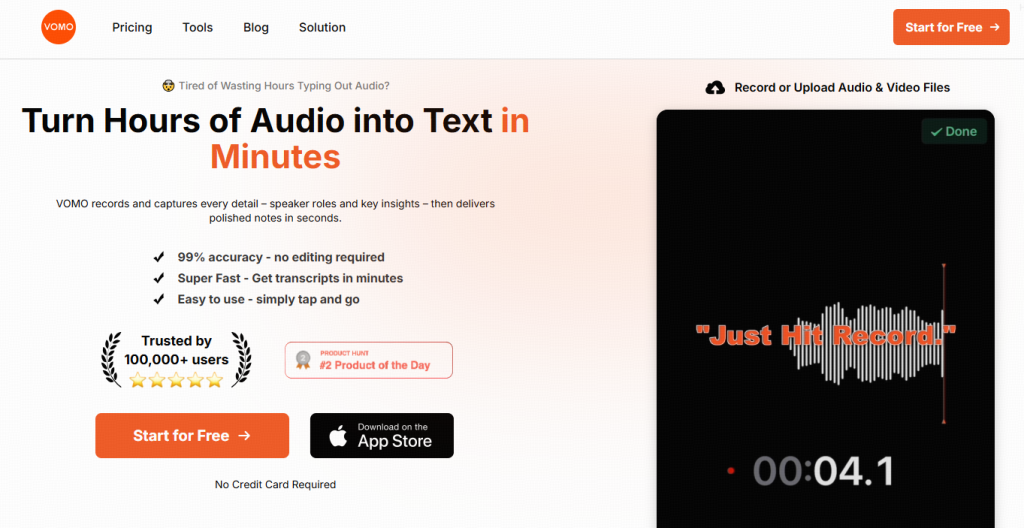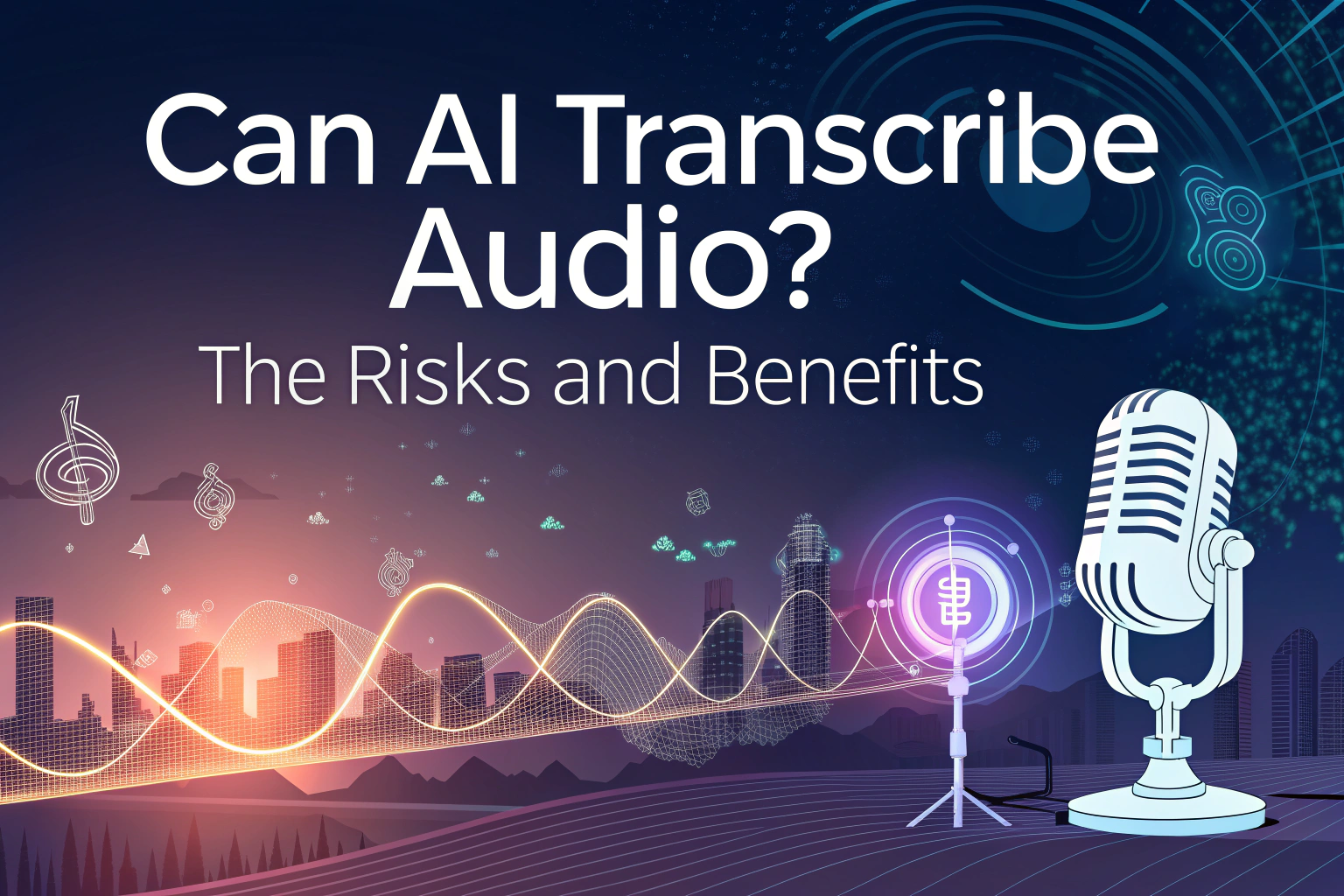Yes, AI can transcribe audio quickly and provide instant text for interviews, lectures, or podcasts. This makes content more accessible and searchable. However, AI transcription is not flawless—tools may mishear words or even generate false phrases, a phenomenon known as “hallucination.” For critical uses like medical or legal contexts, human review is still essential.
How Does AI Transcription Work?
AI transcription relies on Automatic Speech Recognition (ASR) technology. The system breaks down spoken language into smaller sound units (phonemes), matches them against a large vocabulary, and then uses context from natural language processing (NLP) to produce accurate text.
AI Models Behind Audio Transcription
The most advanced AI transcription tools are powered by deep learning models such as:
- RNNs (Recurrent Neural Networks): Earlier models designed to capture sequential audio patterns.
- Transformers: Modern architectures like Whisper (by OpenAI) or wav2vec 2.0 (by Meta) that process large datasets of speech and text for highly accurate transcription.
- End-to-End Models: Systems that directly map sound waves to words, reducing errors from multiple processing steps.
These models continuously learn from massive datasets, improving their ability to recognize different accents, tones, and languages.
Transcription Accuracy: AI vs. Human
When it comes to accuracy, AI transcription still has a noticeable gap compared to human work. A study by Ditto Transcripts reported that AI systems achieved an average accuracy of around 61.9%, while professional human transcriptionists consistently delivered results at about 99% accuracy.
Although some AI providers advertise accuracy rates of 85–86% under ideal conditions, real-world performance is usually lower—often in the 60–70% range. This makes AI transcription extremely useful for speed and convenience, but in contexts where precision is critical, human review is still essential.
| Factor | AI Transcription (Average) | Human Transcription |
|---|---|---|
| Reported Accuracy | 61.9% (Ditto study) | ~99% |
| Claimed Accuracy (Marketing) | Up to 85–86% in ideal settings | — |
| Real-World Performance | 60–70% | Consistently 95–99% |
Risks of AI “Hallucination” in Transcription
Another challenge with AI transcription is the risk of “hallucination”—when the system generates words or phrases that were never actually spoken. For instance, OpenAI’s Whisper has been reported to occasionally insert fabricated or misleading content into transcripts. This issue becomes especially concerning in sensitive areas such as medical or legal transcription, where even small inaccuracies can have serious consequences.
According to recent studies, hallucinations appeared in 8 out of 10 transcripts of public meetings, and up to 1.4% of audio snippets included harmful or completely false fabrications. While these numbers may seem small, the impact of introducing incorrect information can be significant, making human oversight an important safeguard when using AI for high-stakes transcription tasks.
How to Reduce the Risk
To minimize the impact of AI hallucinations, consider these best practices:
- Add human review: Always have a human editor check transcripts for accuracy in professional or sensitive use cases.
- Use clean audio sources: Background noise, cross-talk, and poor recording quality increase the chance of transcription errors.
- Choose reliable tools: Platforms like VOMO prioritize high-quality processing and allow you to quickly spot and correct errors.
- Combine AI with context checks: For technical or domain-specific transcripts, ensure terminology and jargon are verified against trusted references.
By applying these steps, you can benefit from AI’s speed and scalability while reducing the risks of inaccuracies or false insertions.
Benefits of Using AI to Transcribe Audio
AI transcription tools are widely used because they:
- Save significant time compared to manual typing.
- Handle various accents and background noise with high accuracy.
- Make content searchable and SEO-friendly.
- Allow easy repurposing of recordings into blogs, notes, or captions.
For example, converting audio to text allows students and professionals to instantly review meeting highlights without replaying the entire recording.
Can AI Transcribe Video Files Too?
Yes, AI can also process videos by extracting the audio track and converting it into text. This is known as video to text transcription. It’s widely used to create captions, subtitles, and searchable transcripts for YouTube videos, webinars, and online courses.
Limitations of AI Transcription
While AI is powerful, it’s not flawless. Common limitations include:
- Difficulty with heavy background noise.
- Struggles with overlapping voices or very strong accents.
- Occasional errors with technical jargon or uncommon words.
In professional contexts, human review is often added for maximum accuracy.
Best AI Tools for Audio Transcription
Some of the most popular AI transcription tools include:
- VOMO – Fast AI transcription for both audio and video with instant sharing.
- Otter.ai – Great for real-time meeting transcription.
- Rev – Combines AI speed with optional human editing for perfect accuracy.

These platforms make transcription simple, whether you’re handling podcasts, lectures, or video interviews.
Final Thoughts
AI has transformed the way we transcribe audio. With advanced models like transformers and end-to-end neural networks, transcription has become faster and more accurate than ever. Whether you need audio to text for study notes or video to text for captions, AI tools provide a reliable and efficient solution.


